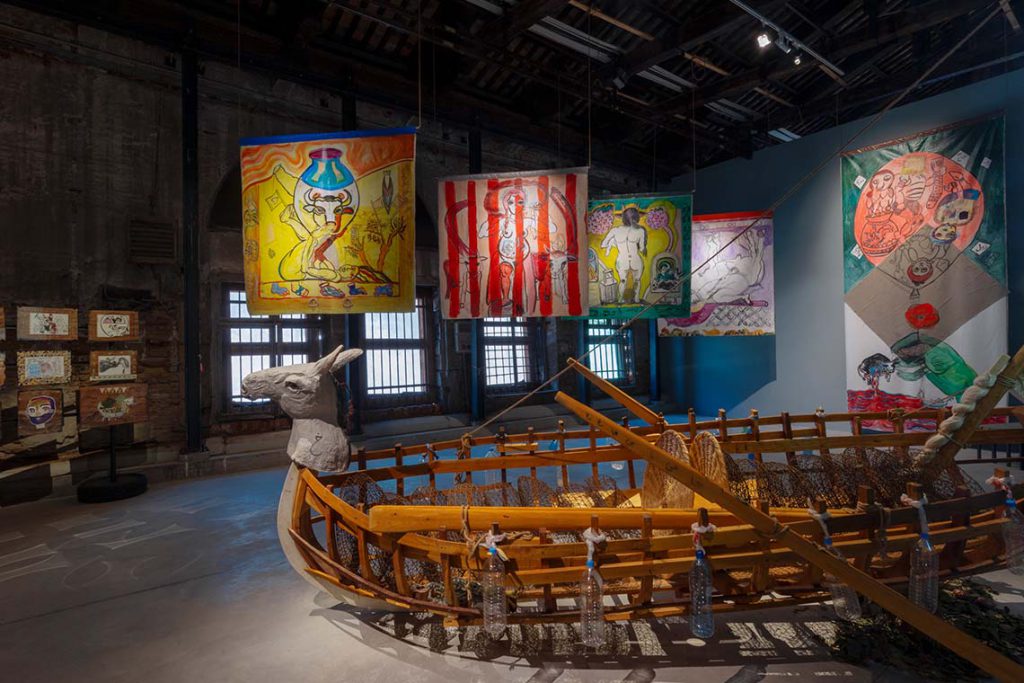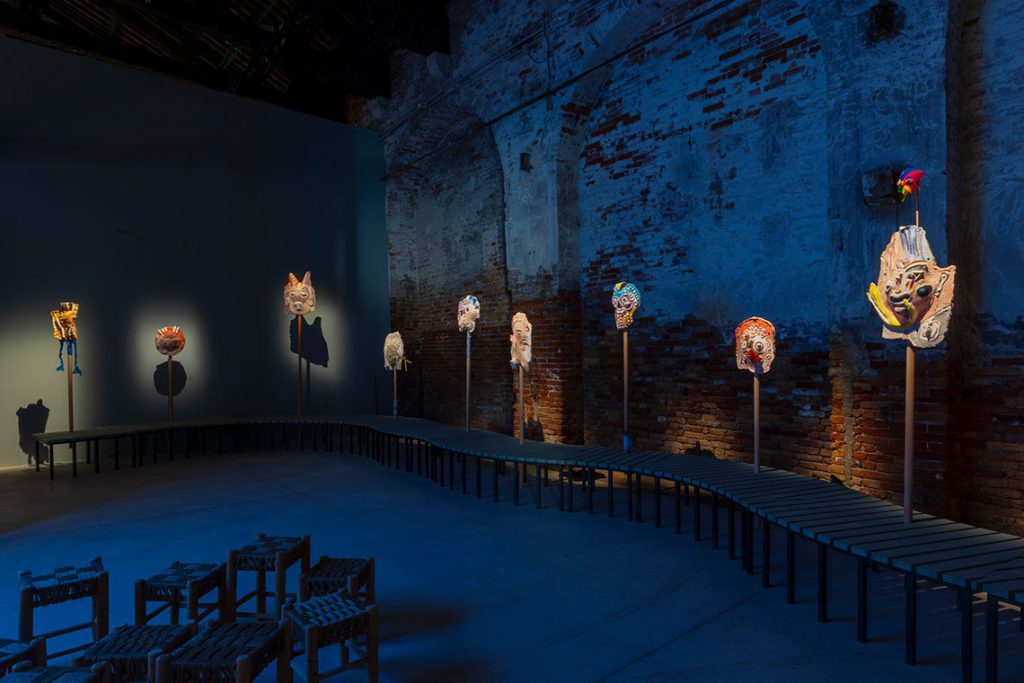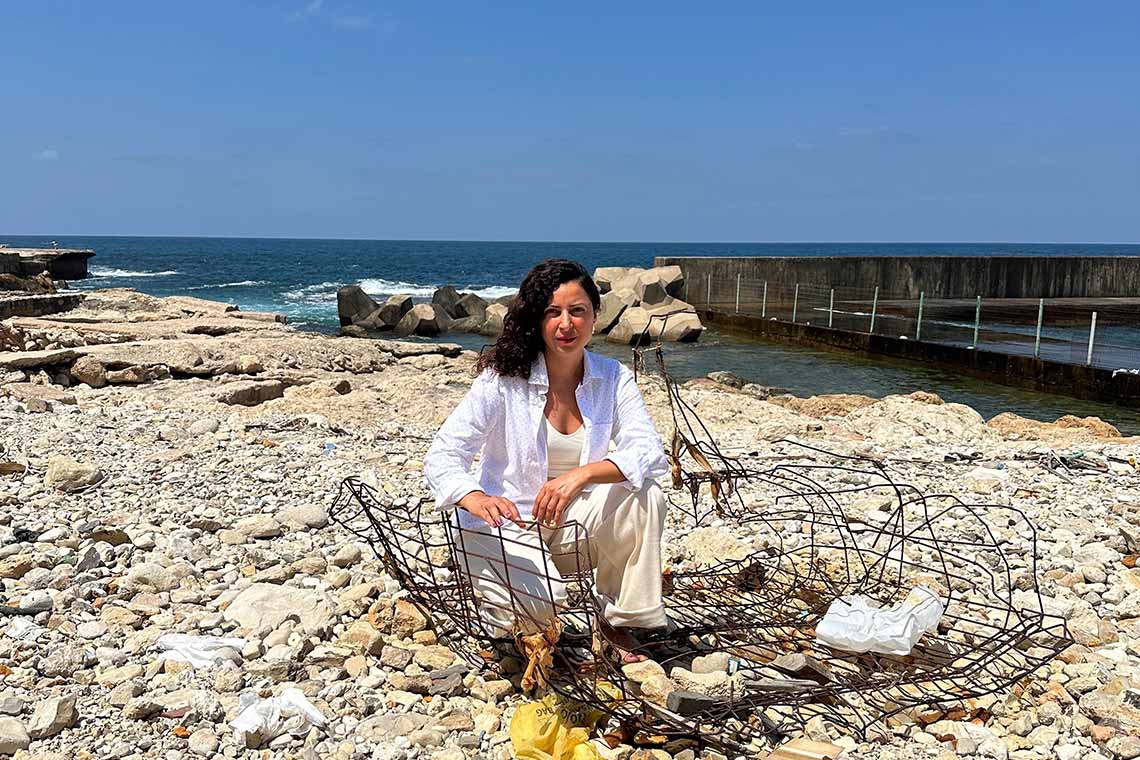The artist for the Lebanese Pavilion at this year’s Venice Biennale explores how embracing myths and changing narratives give us the tools to explore contemporary reality.
Canvas: What was your experience working on this year’s pavilion? How do you feel about representing Lebanon at Venice with your installation, A Dance with her Myth?
Mounira Al Solh: A few years ago, I wanted to reconnect with history. We’re going through a difficult period in Lebanon, and not for the first time. We’ve had to deal with so many challenges, threats, daily assaults, colonial powers and conflicts. So I started to research stories from the region, looking across histories that related to the Phoenicians in an attempt to understand what we are going through today. The work for Venice embraces these histories and myths while also empowering and claiming back the position of women and our attitude towards myths written by Europeans about us. It touches upon all of these elements without being direct and sometimes using humour, which allows people to embrace our current condition.
When Nada Ghandour, the commissioner and curator, along with the Selection Committee, informed me that I had been chosen to represent Lebanon, it allowed me to move forward with this work. So I am very grateful. I have found refuge in it and I hope the pavilion makes people realise that we cannot achieve anything unless we work together.
What responsibilities do artists carry while representing their country at the Venice Biennale?
To answer this, we also have to talk about the countries themselves and how they carry their responsibilities to their citizens. To protect their citizens, including women and children, and civil life. We are in times when our countries are very fragile, but even if there is little support for the arts, we have to carry on and reflect on what’s happening because art tells the story of its people.

Image courtesy of the artist and Sfeir-Semler Gallery Beirut/Hamburg. ©️ LVAA
The pavilion has 41 pieces! What did the preparation and process of creating the works involve?
From the very beginning, I knew that I wanted to make the boat and take it from Beirut to Venice, but this would have been a whole other project. Perhaps it will be the next chapter. While I was looking into it, I was lucky to meet a family in Lebanon who still build boats according to Phoenician construction methods. The Phoenicians used cedar wood, but for the biennale work we chose not to, as the cedar trees are now rare and we should preserve them.
We shot part of the film for the pavilion in the Shouf Biosphere Reserve, with its cedar forests. It’s so beautiful there. You really feel the power of the living trees, and it’s always foggy. It just feels so mysterious and ancient. I hand-stitched the sail and you can see that happening in the film. I also added plastic water bottles, because in Lebanon we mostly drink from these. The impact of corruption on our infrastructure, as well as ecological problems, mean we that we cannot drink from the tap, so this was a way of upcycling elements from our daily life. There are also fishing cages, which we used in childhood and are now are only occasionally used by a few fishermen, as well as drawings I did on papyrus, just as the Phoenicians would have done when they participated in cultural exchanges and traded with the pharaohs in Egypt. Papyrus didn’t last long in Lebanon because of the climate, so it’s ironic that even though the Phoenicians were pioneers in the consonantal alphabet and spread it to Greece, while searching for Europa, who gave her name to the continent. There are hardly any contemporary written accounts left of their times.
Why was it important for you to look at myths from Phoenician history?
My work tackles several issues, including how we fetishise stories like, for example, the story of the Murex shells and how they became valued for fabric dye. In the tale, Melqart was walking along the beach with his dog, who happened to bite into a Murex shell. The colour on the dog’s snout was presumed to be blood, but they soon realised it was a purple pigment coming from the sea snail. Melqart’s wife loved the colour and requested clothing made from it. In ancient times, thousands of snails were killed to extract the amount of dye required for just a tiny piece of fabric. Being rare and expensive, it became associated with royalty and prosperity, and now these snails are disappearing due to the condition of our seas, impacted by pollution and climate change. In my video, I had the dog become female in the tale because, in our unconscious mind, we tend to imagine it was a male. I take these characters, reread them, and then connect them to what is happening to us today.
I also highlight the myth of Europa. Zeus took the form of a bull to trick, rape and kidnap her. The story can be rather aggressive, and Europa is always a victim. I wanted to change this portrayal, so instead I depict her as the one who carries Zeus to Crete. She even kisses him. I’m not saying there’s any love, but the agency is returned to Europa, and in one of the paintings we see her from behind with a suitcase, as if she has decided to leave.

Image courtesy of the artist and Sfeir-Semler Gallery Beirut/Hamburg. ©️ LVAA
The story touches upon many of the current issues we are going through, including how we are never individuals or on our own. For example, when Europa gets kidnapped, her brothers, her mother and the community all look for her, so there is a network involved. I imagine today, as a Lebanese person, if someone were to disappear, the whole community would look for them. With this in mind, I made several masks inspired by the glass amulets Phoenicians used to shield themselves from evil. They are large masks placed in the pavilion, as if they are the society surrounding someone. As a woman, you always have neighbours or family looking out for you. Sometimes these figures will tell you what time you have to be home, or they can have opinions on your clothes, but at the same time, they can also be your protectors. This imposing role is always changing.
I also look at the story from the perspective of a Lebanese woman and what exile means. I grew up during the war in Lebanon, and afterwards there were jokes that for every seven Lebanese women, there was one man. This was because the men would be the first to leave the country to earn money and then would later take their families with them. But nowadays, more women leave to earn their living and help their families.
Do myths become vessels in which we can approach our reality? Do they allow us to take a step back and objectively reflect upon our society without being too close to it?
I think so. Sometimes Europa became so real to me that I forgot she was a myth, and I wanted to give her the tools to take back her narrative. Even though the story was written perhaps a century after it possibly occurred, it has been interesting to see how the myth is sometimes even more important than reality.
When you go to Crete – where Europa was taken to – the myth is even more real. There are children’s books and museums and the like. In Lebanon, the story has become somewhat forgotten, unless you go to Tyre and the ancient sites, but in the National Museum of Beirut there is still a beautiful mosaic depicting the myth and created by the Romans. However, in their version of the story, Zeus as a bull was brown, whereas in the Greek story he was white. There are also discussions on exactly where Europa was kidnapped from. So, the lines between myth and reality are often really blurred, but to whom does it matter? Everyone wants the story to be theirs and every time you come across the story, it is different. What makes it interesting is the interaction between people and how that reflects these relationships and the crossover of so many civilisations. We carry so many fragmented identities and histories within us.
This interview first appeared in Canvas 113: Common Threads
The 60th International Art Exhibition – La Biennale di Venezia runs until 24 November 2024



